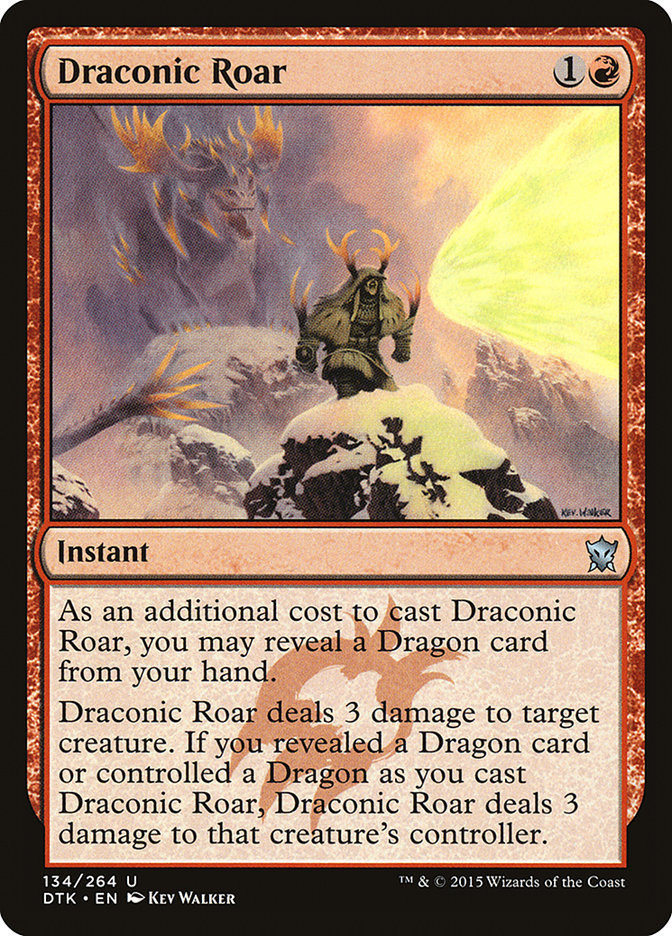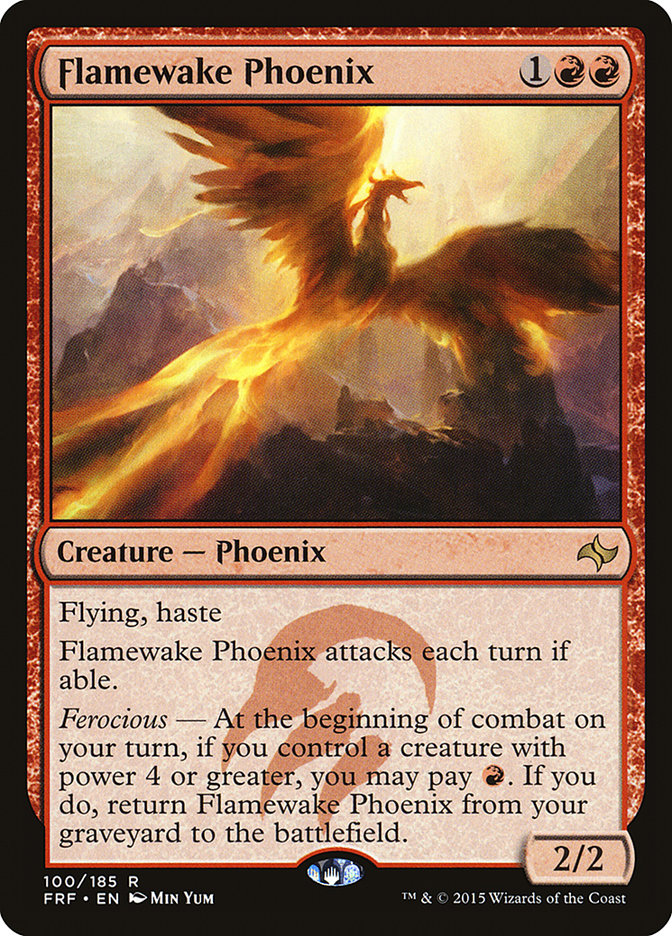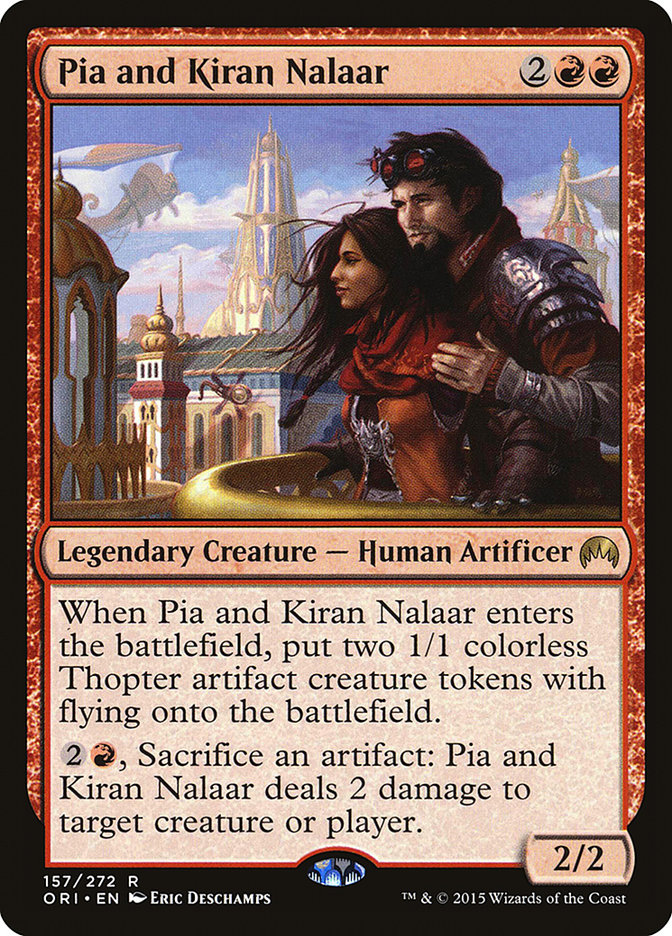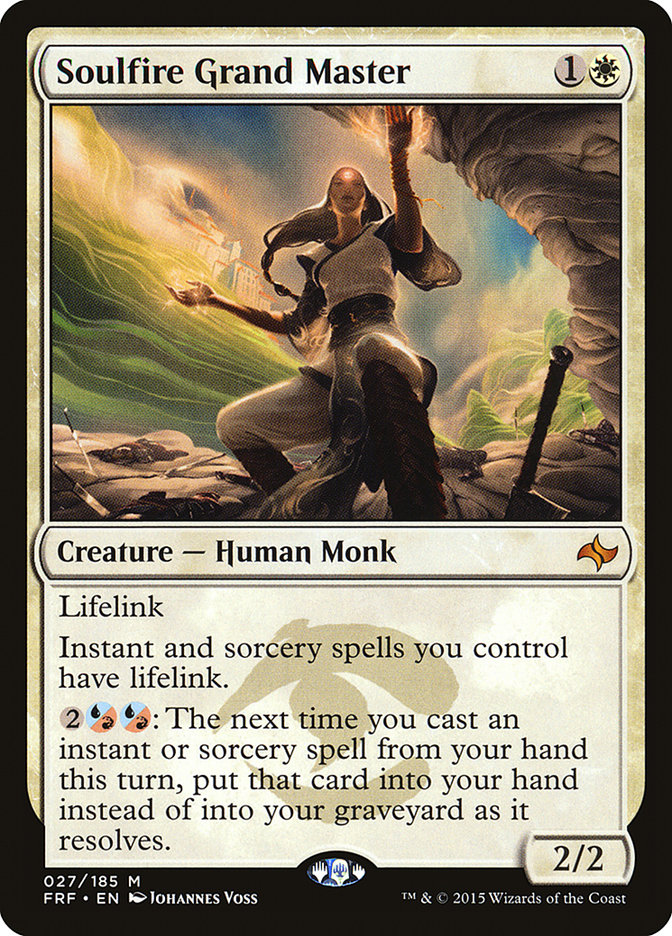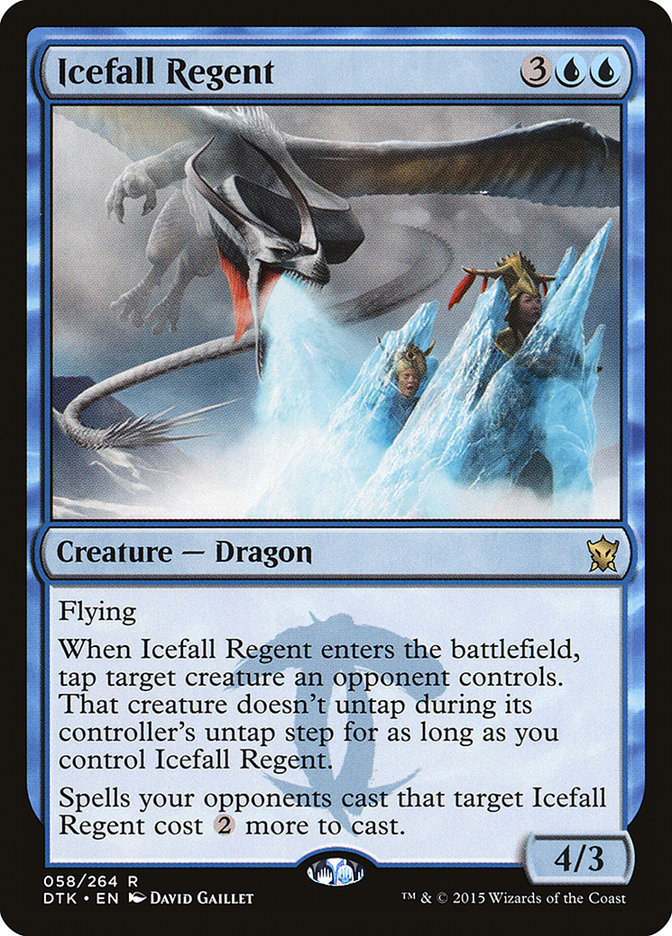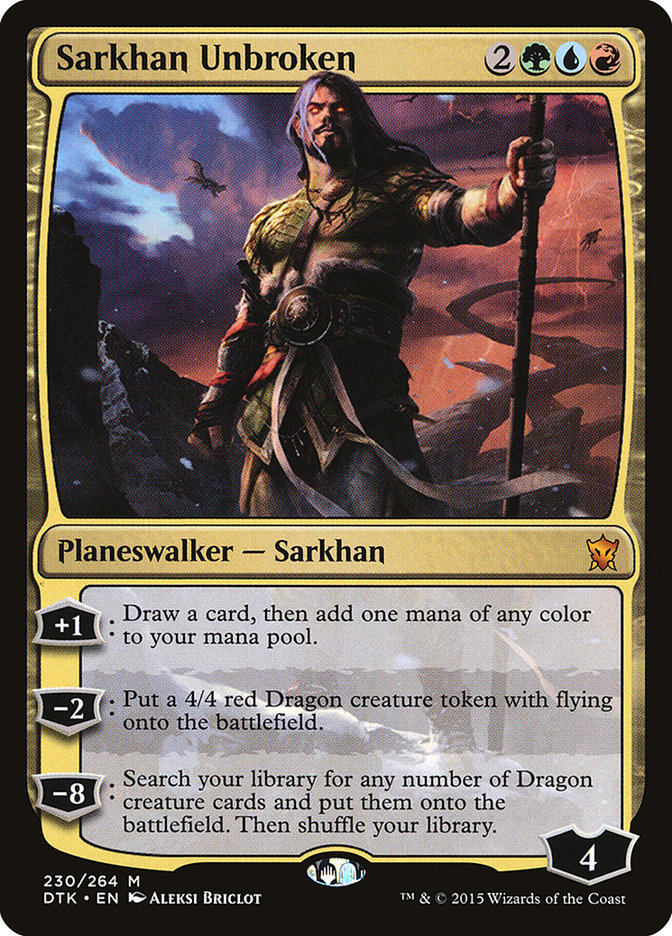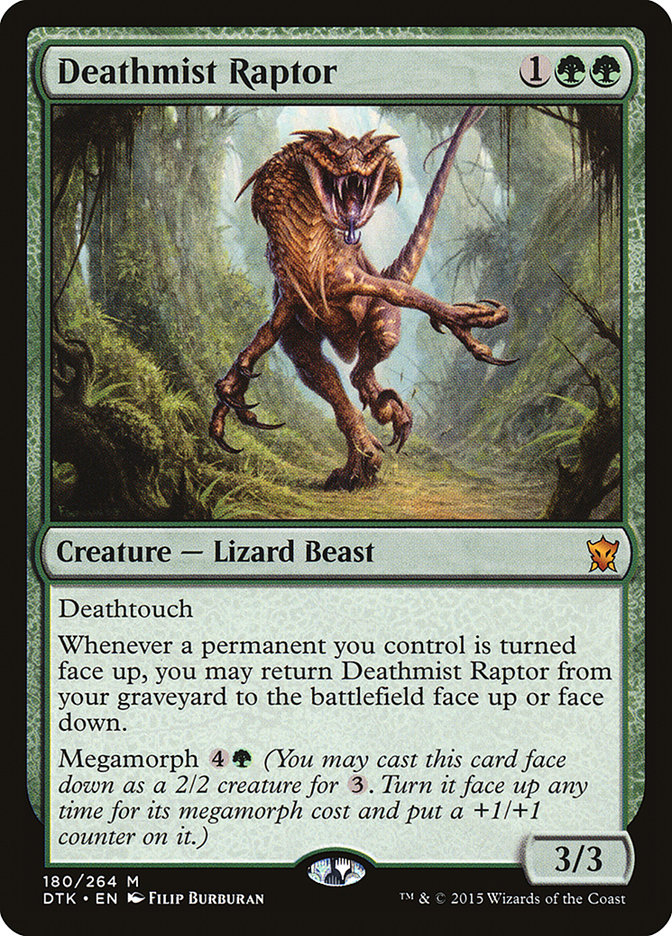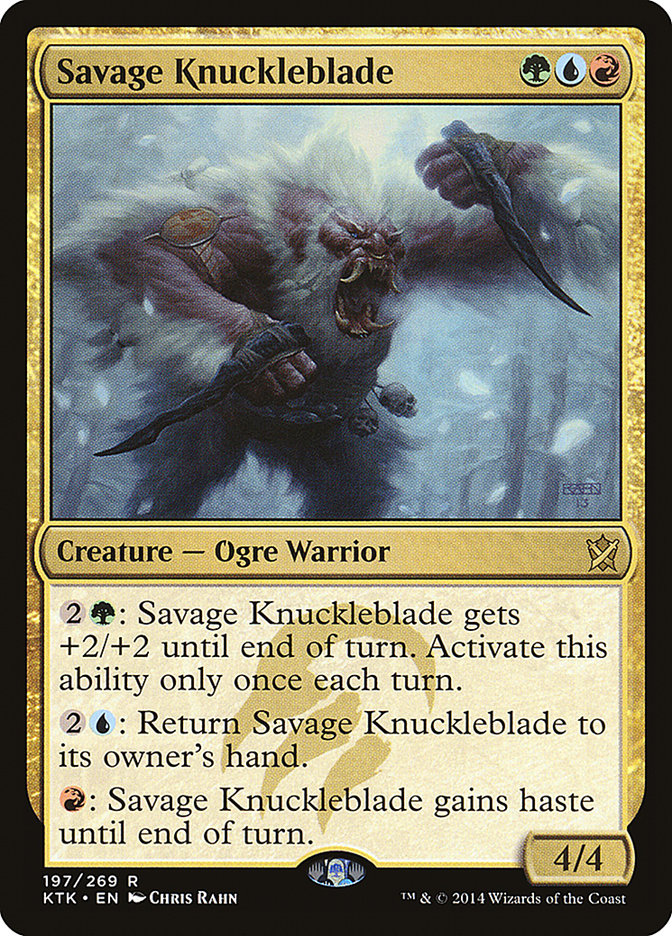Much has been made about how the rotation of Lightning Strike, and to a lesser extent, Bile Blight, will affect Standard. We have had access to Lightning
Strike or something similar for years now, and there will certainly be an adjustment period as players adapt to the change.
The most obvious way to take advantage of this period is to play creatures that Lightning Strike preyed upon, as they are primed to thrive in an
environment without it. The most obvious such creature is Mantis Rider, which can end a game quickly if left unanswered and still provide solid value when
exchanged for a three mana removal spell, especially if that spell is a sorcery.
Another such creature is Brutal Hordechief, which I mentioned last week as a creature that is poised to break out for this exact
reason. Much like Mantis Rider, Brutal Hordechief snowballs out of control very quickly and can provide immediate value in the face of an unprepared
opponent armed with slower removal spells.
However, as this issue has been discussed rather prominently over the last two weeks, it behooves us to look beyond this first level reaction and position
ourselves at level two. This means finding cards that match up well against the threats that Lightning Strike previously held in check and it just so
happens that there is a perfect card for the job:
Outside of aggressive decks like Atarka Red, our Lightning Strikes were targeting creatures much more often than the opponent anyway, so the downside here
is minimal, while the upside of getting both sides for the price of one is enormous. It takes the aggressive position away from your opponent almost
immediately, and if you are able to follow it up with a strong threat on turns 3 or 4, your opponent will be under a lot of pressure.
Unfortunately, Draconic Roar’s best friend, Stormbreath Dragon, is rotating. But with a set named Dragons of Tarkir still in Standard, there
should be enough support for this card to slot into some powerful decks. Before we get to the brews, let’s look at the key aspects of any deck that wants
to use Draconic Roar.
1) Dragons!
This one sort of goes without saying, but we are going to want minimum six Dragons, more appropriately in the 8-10 range to consistently fire off Draconic
Roar with value. Note that the more aggressive the deck is, the more we want to be able to get the bonus and deal damage to our opponent, and thus the more
Dragons we wish to have in the deck, while with a more reactive deck we are happier simply to trade resources early and thus do not need as many Dragons.
2) Strong Three and Four Mana Threats
While almost all of our Dragons will cost five or more mana, it’s important for these decks to have the ability to capitalize on the tempo gain from a
fully-powered Draconic Roar, meaning we will want to immediately follow it on the curve with a strong threat when possible. This means we are attracted to
Khans wedges so we can have access to cards like Mantis Rider and Savage Knuckleblade.
3) Ability to Win a Race
With the aggressive stance Draconic Roar encourages, as well as its secondary role as a reach spell, these decks will often find themselves in races. As
such, it is important that we include the necessary reach or tempo cards needed to consistently win these races, even against lower-curve aggressive decks.
4) Thunderbreak Regent
This card epitomizes the three previous points, and as the cheapest playable Dragon in the format, it will appear in all of our decks below. The incidental
damage from its ability compounds the effect of Draconic Roar, as we saw when it teamed up with Stormbreath Dragon for much of the past year, and I expect
it to be a key player in any aggressively oriented deck trying to take advantage of a Dragon theme.
With that in mind, here are the decks I’m most interested in:
Creatures (22)
- 3 Kolaghan, the Storm's Fury
- 4 Flamewake Phoenix
- 4 Thunderbreak Regent
- 1 Dragonlord Kolaghan
- 3 Pia and Kiran Nalaar
- 4 Hangarback Walker
- 3 Makindi Sliderunner
Planeswalkers (2)
Lands (26)
Spells (10)
Sideboard

This deck is derivative of an archetype that emerged toward the end of Theros/Khans of Tarkir Standard but with a more aggressive tilt. Makindi
Sliderunner and Flamewake Phoenix provide some aggressive starts, especially when supplemented by Draconic Roar. Importantly, Sliderunner attacks into
Anafenza, the Foremost and Savage Knuckleblade when you have a fetchland, and when supplemented by Kolaghan, it can even attack into Siege Rhino and
Tasigur, the Golden Fang.
Hangarback Walker needs no justification on power level, although it is important to note that in this deck being able to block a creature and net one or
two Thopters can allow us to turn the corner quickly, especially when combined with Kolaghan. Also, the synergy with Pia and Kiran is not to be overlooked,
as we now have a way to sacrifice our Hangarback Walker on demand, thus insulating it to some degree from exile effects like Abzan Charm and Stasis Snare.
I think Pia and Kiran is a great addition to the deck since the three bodies give you so much versatility. You can get very aggressive attacking for four
at a time or hold them back and block both large and small creatures for value. In a race, you can use the Thopter tokens as chump blockers while still
dealing two damage with them, making it very difficult for your opponent to effectively execute their gameplan. With no sources of direct card advantage,
this deck needs cards that help to turn the corner when you fall behind early, and Pia and Kiran fill that role beautifully.
With eight Dragons and Sarkhan that can function as one while on the battlefield, we have enough to support Draconic Roar. The mix of removal is certainly
experimental, and I expect we may want more copies of Murderous Cut given how many fetchlands are in the deck.
The manabase here is a huge advantage for a deck like this. As an aggressive deck with a higher than average curve, we are punished heavily for missing
land drops or having lands enter the battlefield tapped. This manabase has essentially no lands entering tapped barring a draw that is heavy on Smoldering
Marshes, and it has more than enough lands of each color to support our spells, and the three utility lands allow us to play a 26th land without fear of
flooding.
One fear I have about this deck is having too high of a curve with a full thirteen maindeck cards that cost more than four mana. Forerunner of Slaughter is
an option that has some synergy with the deck, but it is not one I have been that impressed by since it offers no form of evasion, so your opponent is
typically prepared to deal with it in combat. If more early plays are needed, I would look to Ire Shaman since it has some evasion and is a much better
draw in the lategame.
Creatures (21)
- 4 Mantis Rider
- 4 Soulfire Grand Master
- 4 Thunderbreak Regent
- 3 Dragonlord Ojutai
- 2 Icefall Regent
- 4 Jace, Vryn's Prodigy
Planeswalkers (1)
Lands (26)
Spells (12)
Sideboard

This deck certainly has a better curve than the R/B list above, with access to premium two-drops in Jace, Vryn’s Prodigy and Soulfire Grand Master and
perhaps the premier three-drop in the format in Mantis Rider. However, in order to play all of these cards, we certainly take a hit in the form of a weaker
manabase. With only Wild Slash at one mana, a turn 1 Mystic Monastery should solve most issues, but the three Battle lands combined with four tri-lands
leave us with more awkward draws filled with lands entering the battlefield tapped.
Still, we have a healthy fourteen blue, fifteen white, and sixteen red sources before accounting for Haven of the Spirit Dragon. This spread should allow
us to cast our spells, but if it proves too inconsistent you could move to a more painland-heavy manabase, hoping to offset that life loss with Soulfire
Grand Master and perhaps more copies of Jeskai Charm.
The powerful curve does compensate some for this, along with Jace’s ability to loot through the deck and find untapped lands when needed. Note that Jace
also allows us to loot away dead fetchlands if we draw them. The flip side is good in racing situations, allowing us to rebuy a key burn spell or shrink
opposing creatures so the numbers turn out in our favor.
Soulfire Grand Master plays excellently with Draconic Roar, as we all experienced when Mardu Dragons was popular this summer. The six life you gain can
easily swing a race or buy you the time needed to get the Dragons online. Grand Master is powerful enough that I’m willing to play a Roast over the fourth
Valorous Stance, although I strongly prefer the latter because of its instant speed and ability to protect Dragonlord Ojutai.
The Dragon base here is fairly straightforward, although I have opted for Icefall Regent over more copies of Sarkhan, the Dragonspeaker. Icefall Regent is
an underrated card in my opinion, as the ability often forces your opponent to use their entire turn to deal with it, effectively letting you deal with one
of their creatures for two of your turns for free. That kind of tempo is brutal with cards like Mantis Rider and Thunderbreak Regent maximizing each free
combat step you earn.
If we wanted to play a more controlling list, the Jeskai deck could feasibly splash black and/or green for Dragonlord Silumgar, Silumgar, the Drifting
Death, or Dragonlord Atarka. The off-color fetchlands in the above manabase combined with Haven of the Spirit Dragon give you a free 5-7 sources of your
splash color(s), which is likely enough for a singleton, or at most forces a slight alteration. These cards could be powerful sideboard options that your
opponent is not expecting at all.
Creatures (22)
- 4 Rattleclaw Mystic
- 4 Savage Knuckleblade
- 2 Dragonlord Atarka
- 4 Thunderbreak Regent
- 3 Den Protector
- 3 Deathmist Raptor
- 2 Beastcaller Savant
Planeswalkers (5)
Lands (26)
Spells (7)
Sideboard

My final list plays close to the old G/R Dragons decks. While Stormbreath Dragon is a big loss to this archetype, in particular, since haste rewards you
for playing it ahead of schedule and the monstrous ability was a powerful mana sink, I think Sarkhan Unbroken gives you a powerful replacement that pushes
you to a more defensive strategy.
Deathmist Raptor and Savage Knuckleblade can apply pressure if needed, but they also play great defense, clogging the board for your planeswalkers to take
over the game. This deck is less interested in playing Draconic Roar on curve, it instead uses it to win races once you have established a board presence.
As such, the reduced number of actual Dragons (six) in this deck relative to the other two should be less of an issue, although it is possible that this
deck wants to shave on Roars.
Wild Slash is good in this deck and could take some maindeck spots from Draconic Roar because you can cast it without disrupting your natural curve and use
it in combination with Sarkhan Unbroken’s +1 ability to defend the planeswalker the turn it enters the battlefield. As such, I have the full complement in
the sideboard for aggressive strategies over more powerful options such as Arc Lightning or Radiant Flames.
Savage Knuckleblade is especially important for this deck since it fills out the curve so well, serving as a three-drop or a four-drop if you have a mana
creature on turn 2. The pressure Knuckleblade provides forces your opponent to react immediately, allowing your planeswalkers to land on an even board. It
can also come down later and swing a race with a surprise four or six damage, the mere threat of which can force your opponents to more conservative lines.
I will be keeping a close eye on the results from this week’s Open Series in Indianapolis while I play some local IQs and Super IQs and if the metagame
develops toward powerful three toughness creatures and the slightly bigger aggro decks they support, these decks could be powerful options in the weeks to
come.
While I would have loved to play in Indy myself, and had initially planned to make the trip, my plans changed when I received an email inviting me to
audition for Jeopardy next week in Boston. So once I’m done battling in some local IQs, I’m making my way up the coast for that before heading to Madison
for the GP next weekend and Pro Tour Battle for Zendikar.
If there was ever a time to run hotter than a Draconic Roar, it’s now. One time dealer!

